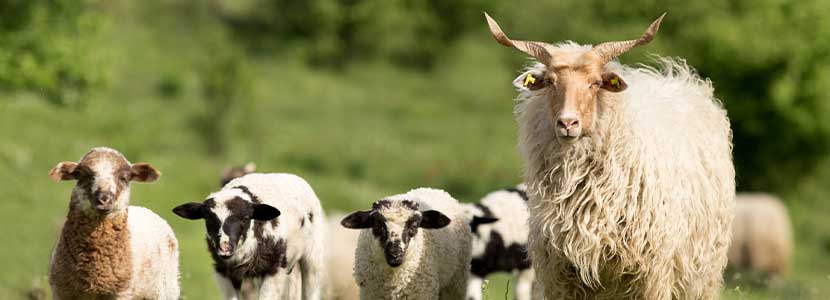 23 May 2022
23 May 2022
Citrus and winery residues: Promising dietary supplements for sustainable ruminant nutrition. Offering potential health, production and meat quality benefits.
Citrus and winery residue inclusion in ruminant diets presents a potential productive benefit. The inclusion of these fruit residues in ruminant diets could combine the desirable effects of improved animal nutrition, health, welfare, production and meat quality while also preventing problems associated with the elimination of such waste into the environment.
Citrus fruits and grapes are the most widely grown fruits worldwide. A third of the total production is destined towards juice and wine production. The processes involved in juice and wine elaboration generate large amounts of solid organic waste, such as the pulp of citrus fruits and grape pomace.


This fruit waste poses serious economic, environmental and social problems. This is especially true in low-income countries, due to financial, technological and infrastructure constraints.
However, they are rich in valuable compounds that can be used in the ruminant livestock industry such as:

Citrus Pulp
It has high proportions of PUFAs, especially linoleic acid (15-45% of total fatty acids). However, there is little data on the fatty acid composition of citrus pulp, which highlights the need to undergo further research on this subject. Citrus fruits and their by-products are rich sources of bioactive compounds such as phenolics, flavonoids and ascorbic acid. The total content of phenols and flavonoids in pulp range from 8.25 to 397 mg of gallic acid (GAE)/g of extract and between 0.3 and 31.1 mg of quercitin equivalent acid/g of powder, respectively. Ascorbic acid levels in citrus pulp range from 18.2 to 46.2 mg/100 mL.
Generally speaking, ascorbic acid and carotenoid contents in citrus fruits meet the recommended requirements for ruminants

Grape Pomace
Grape pomace has high proportions of PUFAs, and more specifically linoleic acid, with 55-75%. Grapes contain high levels of polyphenols, with up to 70% retained in the pomace after the extraction of winery juice. The main polyphenols of grape pomace are phenolic acids, flavan-3-ols, flavonols, anthocyanins and proanthocyanidins. The total content of phenols and flavonoids among cultivars ranges from 55.5 to 153.8 mg OF GAE/g and between 38.9 and 91.7 mg.
The total content of tannins, monomeric anthocyanins and proanthocyanidins in grape pomace extracts ranges from 54 to 152.2 mg OF GAE/g, between 0.02 and 11.2 mg of cyanidin-3-glucoside equivalent/g and between 21 and 51.7%.

CONCLUSIONS
![]() Sustainable use of citrus and cellar by-products as dietary supplements in ruminant production (up to 150 g/kg MS) has great potential in low- and middle-income countries that produce such by-products.
Sustainable use of citrus and cellar by-products as dietary supplements in ruminant production (up to 150 g/kg MS) has great potential in low- and middle-income countries that produce such by-products.
![]() These by-products have the potential to improve nutrient digestibility, rumen fermentation parameters, health and well-being, growth performance, and carcass and meat quality attributes of ruminants.
These by-products have the potential to improve nutrient digestibility, rumen fermentation parameters, health and well-being, growth performance, and carcass and meat quality attributes of ruminants.
![]() Under this scenario a sustainable food production system can be achieved through the use of citrus and winery by-products to obtain improvements in food, nutrition and economic security.
Under this scenario a sustainable food production system can be achieved through the use of citrus and winery by-products to obtain improvements in food, nutrition and economic security.
![]() Future studies are recommended to determine the effects of citrus and cellar by-product feeding on meat fatty acid profiles, shelf life, microbiological quality, and volatile and flavor compounds in ruminants.
Future studies are recommended to determine the effects of citrus and cellar by-product feeding on meat fatty acid profiles, shelf life, microbiological quality, and volatile and flavor compounds in ruminants.
Subscribe now to the technical magazine of animal nutrition
AUTHORS

Hybrid Rye Potential in Laying Hen Feed Rations
Gwendolyn Jones
A day in the life of phosphorus in pigs: Part I
Rafael Duran Giménez-Rico
Use of enzymes in diets for ruminants
Braulio de la Calle Campos
Minerals and Hoof Health in the Pregnant Sow
Juan Gabriel Espino
Impact of Oxidized Fats on Swine Reproduction and Offspring
Maria Alejandra Perez Alvarado